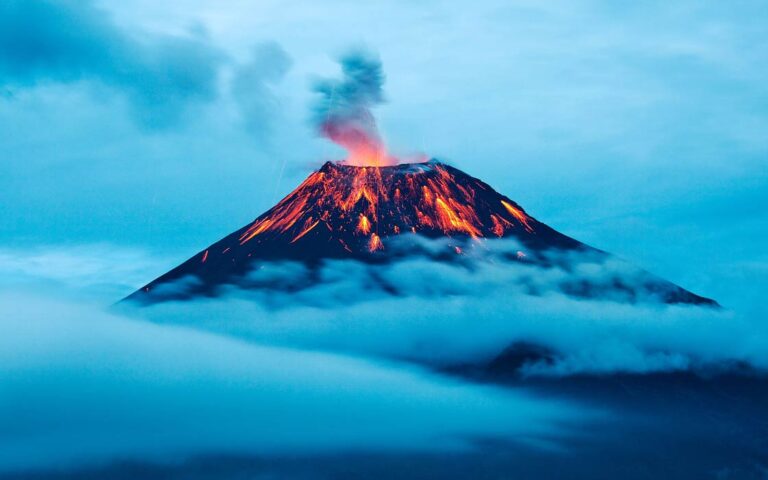The deadliest volcanic eruption in recorded history was mount tambora of what is now indonesia in 1815 there were 10 000 immediate fatalities after the explosion sent dust rock and gas into the air and triggered earthquakes and a tsunami in the java sea

The Deadliest Volcanic Eruption in Recorded History: Mount Tambora

In the annals of natural disasters, the eruption of Mount Tambora in 1815 stands as one of the most catastrophic events in recorded history. Located in what is now Indonesia, the eruption of this colossal stratovolcano resulted in immense devastation, leading to a staggering loss of lives and causing widespread environmental impacts.
Immediate Fatality and Devastation

When Mount Tambora erupted on April 10 and 11, 1815, it unleashed an unprecedented amount of energy, spewing ash, dust, rock, and volcanic gases into the atmosphere. The explosive eruption, estimated to be seven times more powerful than the infamous Krakatoa eruption in 1883, caused massive devastation in its immediate vicinity and beyond.
The eruption of Tambora claimed approximately 10,000 lives instantly, primarily due to pyroclastic flows (fast-moving flows of volcanic gases, ash, and debris) and the collapse of the volcano’s cone. These tragic casualties underline the ferocity and sheer destructive power of the eruption.
Far-Reaching Impacts
The aftermath of the eruption triggered a series of calamities that reached far beyond the volcano’s immediate surroundings. The massive release of volcanic material into the atmosphere caused a global climate anomaly known as the “Year Without a Summer” in 1816. This extreme weather event led to crop failures, food shortages, and livestock mortality in many parts of the world, including Europe, North America, and Asia.
Furthermore, the eruption triggered earthquakes and tsunamis in the Java Sea, further exacerbating the damage and loss of life. The resulting seismic activity caused immense destruction in nearby coastal communities, leaving a lasting impact on the region.
Understanding the Catastrophe
To comprehend the magnitude of the Tambora eruption, it is vital to recognize its scale. The height of Mount Tambora was drastically reduced from approximately 4,300 meters (14,100 feet) to around 2,850 meters (9,350 feet) in the process. This significant reduction in elevation demonstrates the sheer force of the eruption and the scale of material expelled.
Despite the passage of time, the eruption of Mount Tambora remains a subject of significant scientific study and exploration. It provides critical insights into the immense power and global implications of volcanic eruptions, helping scientists better understand the potential risks associated with these natural phenomena.
Conclusion
The eruption of Mount Tambora in 1815 was a cataclysmic event that altered not only the local landscape but also had profound global impacts. The immediate fatalities, secondary disasters, and long-term climate anomalies demonstrate the destructive capabilities inherent in volcanic eruptions. Understanding the lessons from this historic catastrophe helps us prepare for future volcanic events and mitigate their destructive consequences.
Sources:
Related Posts
Quick Links
Legal Stuff

